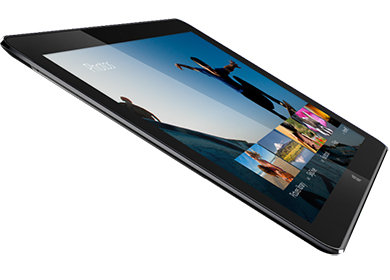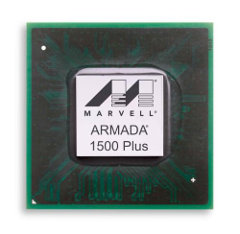Two standards are competing to bring 4K video output @ 60 Hz and 8K over USB type C connectors: DisplayPort 1.4 and superMHL. Lattice, who purchased Silicon Image last year, and Mediatek have collaborated to provide reference designs supporting superMHL and based on Helio X20 deca-core processor combined with Lattice components. Lattice SiI8348 MHL transmitter would handle 4K 60 fps video and MHL power, while Sil7033 USB type-C port controller would also handle USB 3.1 data transfer up to 10 Gbps, USB-C power delivery (PD), MHL Alt-mode on USB-C. Lattice also leverage their SiI7013 mobile USB Typer-C port controller, SiI9396 mobile superMHL/MHL to HDMI bridge, and other chips to offer accessories such as USB-C to HDMI adapters, MHL cables, USB-C charger, and USB-C dock with multiple USB ports and HDMI output. Anandtech notes that one the main problem with USB type C connector is likely to be the cable, as many […]
Intel Reference Design Program for Android Promises Devices with Firmware Updates Tracking AOSP for 2 Years
If you’ve ever bought a low cost Chinese smartphone or tablet, you must know you can’t really expect firmware updates, especially with a different Android version. For example, if you’ve purchased an Android 4.1 phone or tablet a couple of years ago, more likely than not, it’s still stuck to the same version. Intel intends to change all that by launching the Intel Reference Design Program for Android. Yes, Intel has provided reference designs in the past, but this program goes further, especially with regards to Android support, and firmware updates. This is the way it all works: Manufacturers can choose a set of pre-qualified components to build their Android device. Intel will provide a single Android image that works with the drivers to support all components. Intel will take care of GMS (Google Mobile Service), and CTS (pre-)certification for their customers. Intel has committed to provide updates within 2 […]
Texas Instruments Releases Zigbee Home Automation Gateway Reference Design Based on BeagleBone Black
Texas Instruments has recently release a complete Linux based Zigbee home automation gateway based on BeagleBone Black development and CC2531 Evaluation Module Kit hardware which you can purchase for about $100 in total, and including Z-STACK Ubuntu gateway installer, as well as Z-STACK Home, a ZigBee Home Automation (ZHA 1.2) compliant protocol stack for the company’s CC2530 and CC2538 SoCs. I won’t go into details about the BeagleBone Black as I have already covered it into details previously. However, the hardware has slightly changed since the initial release, as the 2GB eMMC has now been replaced by a 4GB eMMC, and price has been increased to about $55. CC2531 evaluation module kit is comprised of CC2531 USB Dongle which you can connect to the USB port of a PC, or in this case a BeagleBone Black, for 802.15.4 / ZigBee applications. TI also provides CC2531 USB Firmware Library on their site to let developers […]
Intel Showcases Tablet / 2-in-1 Reference Design based on 14nm “Broadwell” Core M SoC
Intel has unveiled a thin tablet reference design at Computex 2014, in Taiwan, which is based on their upcoming “Broadwell” Core M processor manufactured using 14nm process technology, which will be the most power efficient Intel Core processor to date. Intel fanless mobile PC reference design features a 7.2mm thick, 12.5″ tablet that weights 670 grams. You can also connect it to a media dock providing additional cooling allowing more performance, as well as a keyboard dock. Intel expects 2-in-1 products (tablet + laptop) based on Intel Core M to be available later this year. Intel claims 60% lower power dissipation, 20 to 40% better performance, and 10 to 45% low SoC power, and half the package footprint compared to third generation “Haswell” Core processors, which will allow fanless and thin designs. Currently Mobile Haswell Core processors have a maximum TDP of 11.5W to 47W, so in theory, at best, Broadwell SoCs might achieve […]
Nvidia Tegra K1 Reference Tablet and Graphics Demo
With Tegra K1 and its Kepler GPU, Nvidia brings OpenGL 4.4, and not only OpenGL ES, to mobile devices, and the company is demo’ing OpenGL games such as Trine 2 on Tegra 4 reference tablet at CES 2014. Nvidia Tegra K1 Specifications In my initial post about Tegra K1 announcement, I missed some key features about Nvidia new processor which has now popped up on their website such as support for up to 8GB RAM, 4+1 configuration, etc and so listing a summary of the technical specifications of the 32-bit version may be useful: GPU – 192 NVIDIA CUDA cores using Kepler architecture CPU – NVIDIA 4-Plus-1 Quad-Core ARM Cortex-A15 “r3” up to 2.3 GHz Memory – DDR3L and LPDDR3, up to 8 GB with 40-bit address extension Display – LCD: Up to 3840×2160, HDMI: Up to 4K (UltraHD, 4096×2160) Package – 23×23 FCBGA, 16×16 S-FCCSP, or 15×15 FC PoP […]
Marvell Unveils ARMADA 1500 Plus (88DE3108) SoC for Android and Linux Smart Video Platforms
Building on top of it ARMADA 1500 SoC for Google TV, Marvell has recently announced the ARMADA 1500 Plus (88DE3108) HD secure media processor SoCdesigned for smart video products based on Android 4.2.2, and Linux, such as media players, OTT boxes, hybrid set-top boxes and smart TVs. ARMADA 1500 Plus features two ARM Cortex A9 cores, Vivante GC1000 and GC300 GPUs, respectively for 3D and 2D graphics, and integrates an HDMI receiver and Gigabit Ethernet. Hisense will be among the first to use the platform with the upcoming H6 Smart TV and Pulse Pro set-top-box, but details have yet to be released for these two products. Here are the key features of 88DE3108 SoC: Processor – Dual core Cortex A9 with over 6000 Dhrystone MIPS Dedicated 3D and 2D graphics acceleration – dual threaded unified shader (Vivante GC1000 and GC300) with support for OpenGL ES 1.1/2.0 and DirectFB. Video vMeta […]
WonderMedia Announces 7″ and 10.1″ Reference Tablets Powered by WM8980 SoC
WonerMedia has unveiled 2 turnkey tablet solutions for manufacturers powered by their WM8980 SoC combining a dual Cortex A9 processor, and an ARM Mali 400MP2 GPU. One design is based on a 10.1″ display, and the other on a 7″ display. The key features of WonderMedia tablet reference designs are as follows: Up to 1.4GHz WM8980 ARM Cortex- A9 Dual-Core processor ARM Mali-400 Dual-Processor GPU Up to 2GB DDR3 RAM and 16GB NAND Flash Thin design of only 4.5mm on top edge and 3mm on side edge Weight – 650g for 10.1” and 370g for 7” designs Support for up to 8M rear camera and 2M front camera WiFi and 3G cellular networks support I/O – 1x Mini HDMI port, 1x Micro SD port (up to 32GB), 1x USB and Micro-USB OTG port, and 1x 3.5mm stereo headphone jack Battery – Up to 8000mAh battery for 10.1″ and up to […]
Texas Instruments HG3352 Home Automation & Energy Gateway Reference Design
Texas Instruments has recently announced HG3352 Home Gateway Reference Design that can connect to home energy systems, or/and home automation systems. This reference design, powered by TI Sitara AM3352 Cortex A8 processor, supports ZigBee, Wi-Fi, NFC, Bluetooth, and Ethernet connectivity to allow developers to create home gateways that can interface with multiple systems, products and applications within a smart home. Here are the key features and benefits of TI HG3352 Home Gateway Reference Design: SoC – TI Sitara’s AM3352 ARM Cortex-A8 processor running Linux OS System Memory – 2GB DDR3 Storage – 2GB NAND Flash memory Connectivity: Single ZigBee device (CC2530) supports ZigBee Home Automation and ZigBee Smart Energy standards. WiLink 8.0 solution supports Wi-Fi, Bluetooth, and Bluetooth low energy in a single chip. 6-channel power management integrated circuit (TPS650250) with dynamic voltage scaling provides high power efficiency. Expansion headers give developers flexibility to support power line communications (PLC) and […]








